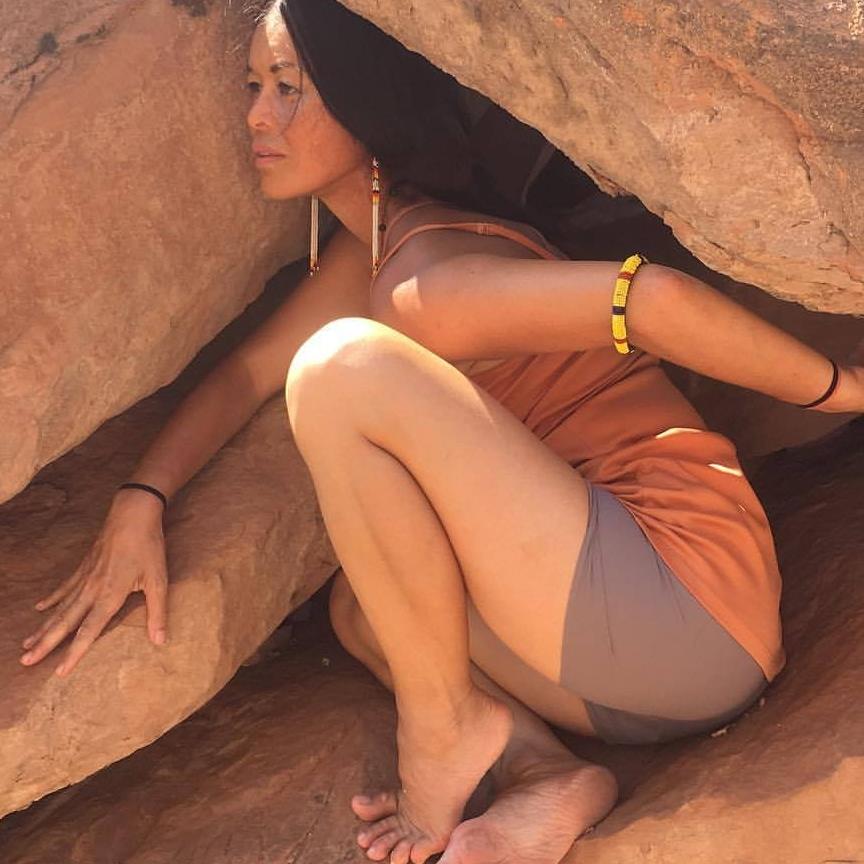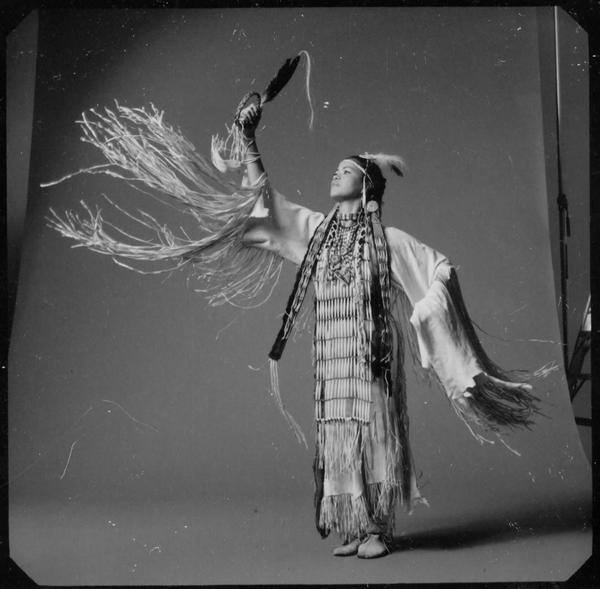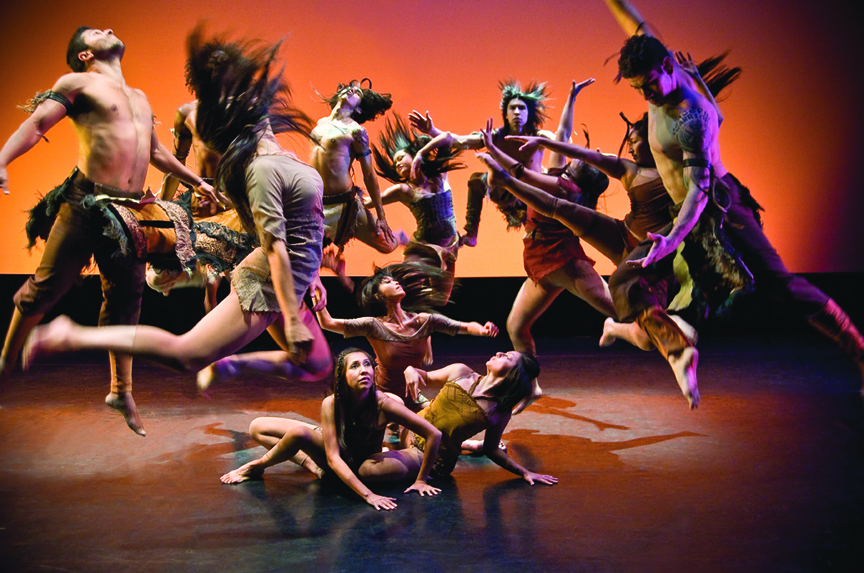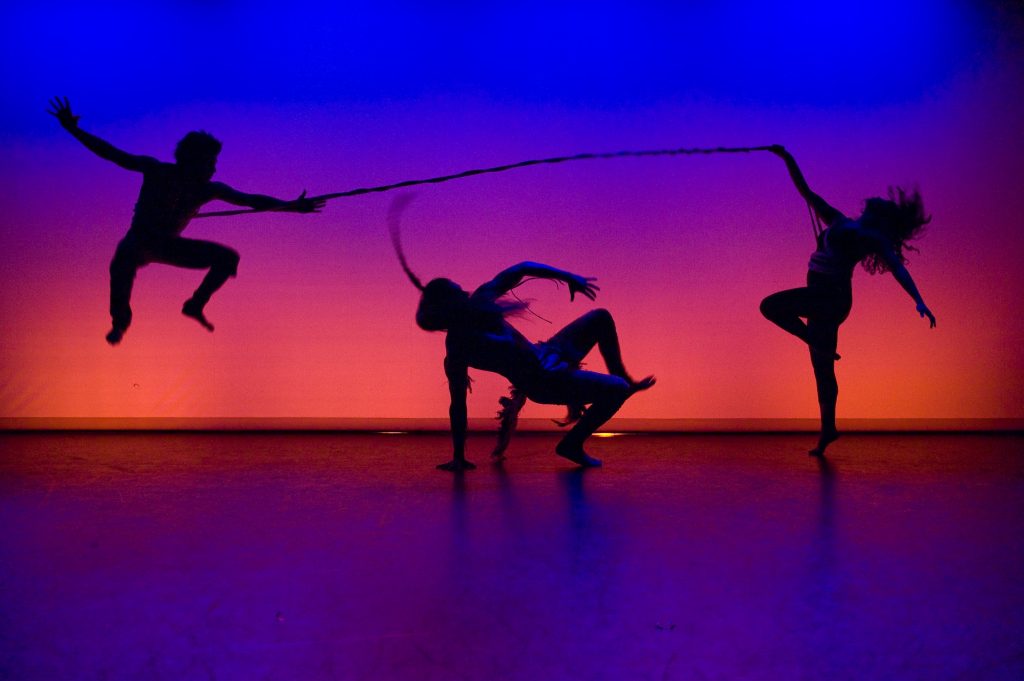As we mark the International Day of the World’s Indigenous Peoples, NAISDA was honoured to have the opportunity to speak with a highly influential figure of North American dance, Rulan Tangen.
Rulan is the Artistic Director of Dancing Earth, an Indigenous Contemporary Dance Company based in the USA. Her own heritage is mixed, including Kapampangan, Norwegian and many more lineages. She is claimed by Kainai, Lakota, and Métis/Anishnaabeg families of First Nations of the US and Canada.
In this interview, Rulan shares the inspirational story of how she overcame many barriers and challenges to pursue her passion for dance, as well as the events that led her to form her own company, Dancing Earth. She also shares her thoughts on the Indigenous arts landscape in the USA, and why it is important to create and grow platforms for Indigenous artists to thrive.

How did you get into dance and performing arts?
My childhood was quite chaotic, and I think I fell in love with the concept of dance as this way to discipline. I willed myself into it, because I was not that gifted physically. I had hunched shoulder and big, thick glasses! I remember listening to music one day and I could just feel inside myself what it would be like to dance to that kind of music. It was classical music, so I was imagining myself in ballet – a form I didn’t even know yet.
So, I checked out books from the library and tried to teach myself. I moved myself to my grandparents’ house, because I knew that I could go to school consistently there. I enrolled myself in ballet classes. I couldn’t afford to pay for the classes so I would make deals with the teachers, like agreeing to clean up the studio. Again, I wasn’t that talented, but I had that crazy look in my eyes, so people just got out of my way!
I graduated high school when I was about 14 and a half. I moved to New York City when I was almost 16 and I was working professionally at age 17. I tell this to young students because they often say, ‘I don’t have this’, or ‘I don’t have these advantages’ – but I didn’t even have talent!
You can apply yourself to something. I learned the physical dynamics and committed myself with every cell: body, mind, heart, and soul.
How did you become involved with cultural dance?
I was a working-class person so everything was just about getting good enough so that I could get paid. At a certain point, I took a step back so I could consider what else dance was in this world and wanted to explore my cultural links to dance. I started going to Powwow dances in the area to learn and to remember dance as a cultural expression.
You had to be introduced into the Powwow circle through ceremony, which was all about relationship building! formed a close relationship with a grandmother, who took me under her wing. She told me I needed a more grounded cultural dance form, which was basically standing in one spot and bending and straightening your knees to the beat of the drum. That style is about being connected to the heartbeat of Mother Earth.
I had so many questions for her of what I wanted to learn more about, but her response was often to ask me to help her make stew or clean the kitchen. I couldn’t understand why she wanted me to be so domestic, I wanted to be an artist! Now I understand that she was trying to teach me about relationship building and showing commitment. How to be part of a community, where it’s not just about creative self- expression.
I was taught how to make a beautiful white deer skin gown, which is very, very difficult to make. I was encouraged to just use the deer skin and bones and elements from nature, rather than cloth and beads from western sources (which are integrated into stunning Powwow regalia). She wanted me to have something that had a purity, a link to ancestral ways. I was so proud to make this beautiful gown, but when I finished, I was told to give it away. She did this to me four times. After my fifth time making one, I was allowed to keep my gown and was introduced into the Powwow circle. That’s the regalia I still have to this day.
That process made me realise that what you’re wearing is alive and you bring it alive with your movements. It impacts you and everything you’re wearing is part of the dance.
Powwow dance forms are special form of cultural dance, because it’s designed to be inter-tribal and for relationship building, as opposed to many of the other ceremonial dances which are specific to one tribal group, for specific time and place.

What inspired you to form Dancing Earth Creations?
30 years ago, when I made an entrance into these two different worlds [Powwow and classical/modern theatre dance], there seemed to be no good reason for these two worlds coming together. There was a lot of conservatism, it didn’t seem appropriate. But things were starting to shift. There was a movement of Powwow dancing being introduced to a stage form, which was quite shocking at the time.
In my 30s I had a life-threatening battle with stage four cancer. I came out of it without my muscles, skin and hair. But I did have my life. It made me realise that I wanted to give back.
A lot of the young kids that I had taught out on the reservations appeared before me. They were now 19-20 years old, along with an amazing group of Native breakdance and street dancers, and they were ready to become Dancing Earth. I had been trying to choreograph before that, and it was definitely a sort of a fusion because when you are highly trained, I think your choreography will always be related to what you’ve done before.
It took me being unable to walk to reteach myself how to move and how to translate my dreams through words and gestures with other people. I don’t see myself as doing something that is imposing a vision onto people – to me that is like colonisation of the body. To me, it’s about creating an atmosphere where they can contribute to a collective dream or vision.
Before that point in my life, I was living to dance. It was my passion. But after that, I was dancing to live. I was dancing for life the way many Indigenous people connect their ancient dances to the perpetuation of life. Even though I was finding a very full-bodied contemporary form, it connected more to life force.

Tell me about the Indigenous performing arts landscape in the USA. Are there many platforms for Indigenous artists to express their art?
Native people are about one percent of the population here. Similar to in Australia, they have incredible resilience against poverty, health challenges and all kinds of disadvantages. With my dance company, even when someone shows a lot of dance talent, once they’ve gone through Dancing Earth and have shown themselves to be strong leader, they often get tapped on for quite complex leadership roles, because it’s so necessary.
One of my former dancers is a lawyer focussing on environmental law, another one is analysing treaties for her tribe. So pretty high-minded stuff! But dance stays in their lives and keeps them healthy and creative.
But in terms of opportunities for the arts, the USA has one of the lowest arts budgets in the world. When you look at our history, the first people who came over on boats were from religions that were very austere and demonised dance and singing. They of course, were not the only ones to come to the US, and some of the people and cultures that have come over promote much more of a celebration of arts.
We’ve certainly seen some pockets of culture form in the US. The state of Minnesota for example, has much higher budget for the arts and two of the best-known Indigenous choreographers in the country have relocated there to create better opportunities.
There’s not a huge amount of resources, but Indigenous people are so incredibly resilient at making things happen in their own communities. There are some Indigenous choreographers out there that are doing well in the mainstream. And then there’s still a lot of work in finding the people out there who have a gift but don’t know this is a possibility and giving them the training and the confidence to become creators.
Dancing Earth quite distinctive in the fact that we make opportunities for young artists. In these 15 years, Dancing Earth has created platforms for over 55 First Nations from the US, Canada and a number of other countries.
There is something amazing that happens when Indigenous from diverse backgrounds come together – that’s the most powerful synergy there is. I am honoured to have made such opportunities from the earliest days of Dancing Earth.
Tell me about the style of dance and the creative processes at Dancing Earth.
What I think is quite distinctive and powerful about Dancing Earth is the fact that we are a safe circle for cultural exchange, dialogue and experimentation. We can explore multiple creation stories to renew their meaning in current times, and then how do we bring those points of view together into one narrative. It’s more of a mosaic than a melting pot, so that each bit has its own integrity.
What that means is that we aren’t always telling a particular story from beginning to end, from one viewpoint. But we are all working together and bringing in our own perspectives, which might be shared through gesture or coded movement. Often the through-line is an energetic through-line in our narratives.
Traditional dance forms may be the least referenced in our dances, because they are the ones that need to be the most protected. Some of it is just built into a person’s way of moving, such as the way the foot touches the ground. We consider things like, ‘what was it that inspired our ancestors and how does that inspire us now?’
To me, it’s more about how we can continue to explore how to express cosmologies through movement: the process and the outcome. I am continually exploring the idea of Indigenous inter-cultural sharing. Maybe it’s who I am as a ‘mixed’ person. Each world view is unique, but it’s important to carry these different perspectives and share them so that we can have a complete understanding of the world.

Why do you think it’s so important to promote the preservation and exploration of Indigenous dance, both on a national and international level?
In every place where I’ve been able to experience ceremony dances, dance and music have represented transformation. They are the core of ritual. Ritual is how we mark time and evoke change, be it life or death.
Right now, our world is in crisis. Indigenous people hold the knowledge, and have always held the knowledge, to help.
There are ways to try and make change, such as treaties, going to the UN and speaking through environmental platforms. But lately, there has been a charge from different Elders, telling us to use our art. Use our art to change hearts. That’s what will make the true change.
Especially with younger generations. They can become more understanding of our ways by being attracted to the songs, the dances and the ways of being in connection. I see it as quite an ancient way to reinvigorate the humans of the planet around very modern causes.
Language is within dance. Stories are within dance. People can learn when their hearts are open, and I think that’s what dance can do. The arts are most deft instruments and always have been.
Dance has the power to unify. It can activate people who are divided, and on the way to being conquered. Maybe it’s an undercover power that can’t quite reveal itself!
So much of modern life is about getting people out of their bodies. People are just these shopping heads or workhorses. When you think about the kind of physical labour that many lower income people of colour have to do, it’s almost like you have to disembody to do it. It’s such a decolonising gift to be in your body and breathing fully and feeling with all of your senses – it makes you aware on all of your so many dimensions!
When you have it, you can feel that connection to not only human beings but to the beyond-human world. And that’s something that I think Indigenous dancers have always known.

Finally, what advice would you give to young Indigenous artists considering a career in dance or the performing arts?
If you have the creative fire in you, you don’t have to wait for someone to choose you. You can create. You can make your own circles.
If you’re dreaming of something that you haven’t seen manifested someplace else, that’s your vision. That’s the gift that you can bring to the rest of the world.
NAISDA would like to thank Rulan for sharing her unique perspective and story with Australian audiences. We look forward to exploring opportunities to collaborate with Rulan and Dancing Earth in the near future.